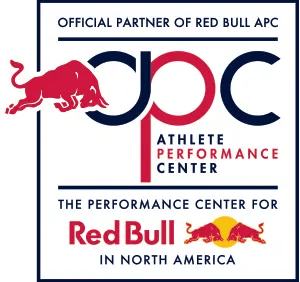Golf is a very physically demanding sport, and back pain is a common complaint among golfers, stemming from the repetitive motion of swinging a club coupled with poor posture and technique. However, with the right approach, you can minimize the risk of injury while also enhancing your performance on the course. Here are some practical ways to help you swing without the sting of back pain and take your golf game to the next level:
Video: DISC Patient Went Back to Playing Golf

Back Stretch and Warm Up
Before hitting the first tee, take the time to properly stretch out and warm up your body, and especially your back. Engage in dynamic stretches and exercises that target the muscles used in your golf swing, paying special attention to your back, hips, and shoulders. Incorporate movements like arm circles, hip rotations, and torso twists to increase blood flow and flexibility, reducing the likelihood of strain during your round.

Strengthen Your Core to Help Your Golf Game
A strong core is essential for maintaining stability and generating power in your golf swing while also providing support for your spine, as well as maintaining good back health.Core muscles assist with the transfer of forces between the upper and lower body, which come into play during every single golf swing, so core stability is essential in helping to protect the spine and prevent injuries.
Incorporate core-strengthening exercises into your regular fitness routine, such as planks, Russian twists, and medicine ball chops to build a solid core that will help protect your back and improve your overall performance on the course.

Focus on Proper Golf Posture
Maintaining proper posture throughout your golf swing is crucial for preventing back pain and maximizing your distance and accuracy. Keep your spine straight, shoulders back, and knees slightly bent. Avoid slouching or arching your back excessively, as this can put undue stress on your spine and lead to injury. Practice good posture both on and off the course to reinforce healthy habits.

Nail Your Golf Swing Mechanics
Perfecting form in any sport takes time, and golf is no different. Improper form during your golf swing can contribute to back pain and hinder your performance on the course. Work with a qualified golf instructor to break down your swing mechanics, refine your technique and address any flaws that may be causing strain on your back. Focus on smooth, fluid movements that engage your entire body, rather than relying solely on your arms and shoulders. By honing your mechanics, you can generate more power with less effort and reduce the risk of injury.

Choose the Right Golf Equipment
The equipment you use can have a significant impact on your comfort and performance on the golf course. Invest in clubs that are properly fitted to your body size, swing speed, and skill level to ensure optimal performance and minimize strain on your back. Consider using a lighter, more flexible shaft or experimenting with different club lengths and grip sizes to find what works best for you. Additionally, investing in supportive footwear with ample cushioning and stability can help reduce the strain on your back during long rounds.

Take Regular Breaks While on the Golf Course
Golf is a game of patience, and it's important to pace yourself to avoid overexertion and fatigue, both of which can lead to improper form and increase your risk of back pain. Take regular breaks between shots to rest and rehydrate, especially on hot days when dehydration can exacerbate muscle tension and stiffness. Use breaks as an opportunity to stretch your muscles and reset your posture, allowing you to maintain optimal performance throughout your round.

Listen to Your Body
This may seem obvious, but all golfers, from novices to pros, should listen to their bodies and pay attention to any warning signs of discomfort or pain. If you experience persistent back pain during or after golfing, it's important to address it promptly rather than ignoring it and risking further injury. Consider consulting with a healthcare professional specializing in spinal health and sports medicine to assess your condition and develop a personalized treatment plan. In some cases, modifications to your swing technique, physical therapy exercises, or other interventions may be necessary to alleviate pain and prevent future injury.
Back pain doesn't have to be a handicap on the golf course. By following these tips and incorporating them into your golf routine, you can reduce the risk of injury, improve your performance, and ensure you have a healthy spine on the back nine for years to come.
If you’re experiencing back pain while golfing, consider scheduling a consultation with one of DISC’s renowned orthopedic spine surgeons to discuss treatment options and get you back to swinging without the sting.
ARTICLE CATEGORIES: Patient Education, Herniated Discs, Spine, Lumbar Spine, Spine Health, Degenerative Disc Disease

About the author
discmdgroup DISC Sports & Spine Center (DISC) is a national leader in minimally invasive spine surgery, orthopedic surgery, and sports medicine care. Our spine surgeons set the standard in artificial disc replacement, spine fusion, discectomy, microdiscectomy and the full spectrum of spine procedures. The group’s orthopedic surgeons advance the state of joint preservation surgery and total joint replacement, including total knee replacement as well as total hip replacement. Our flagship surgery centers based in Newport Beach, Marina del Rey, and Carlsbad serve patients local to Los Angeles, Orange County and San Diego, as well as the rest of the country. Read more articles by discmdgroup.





